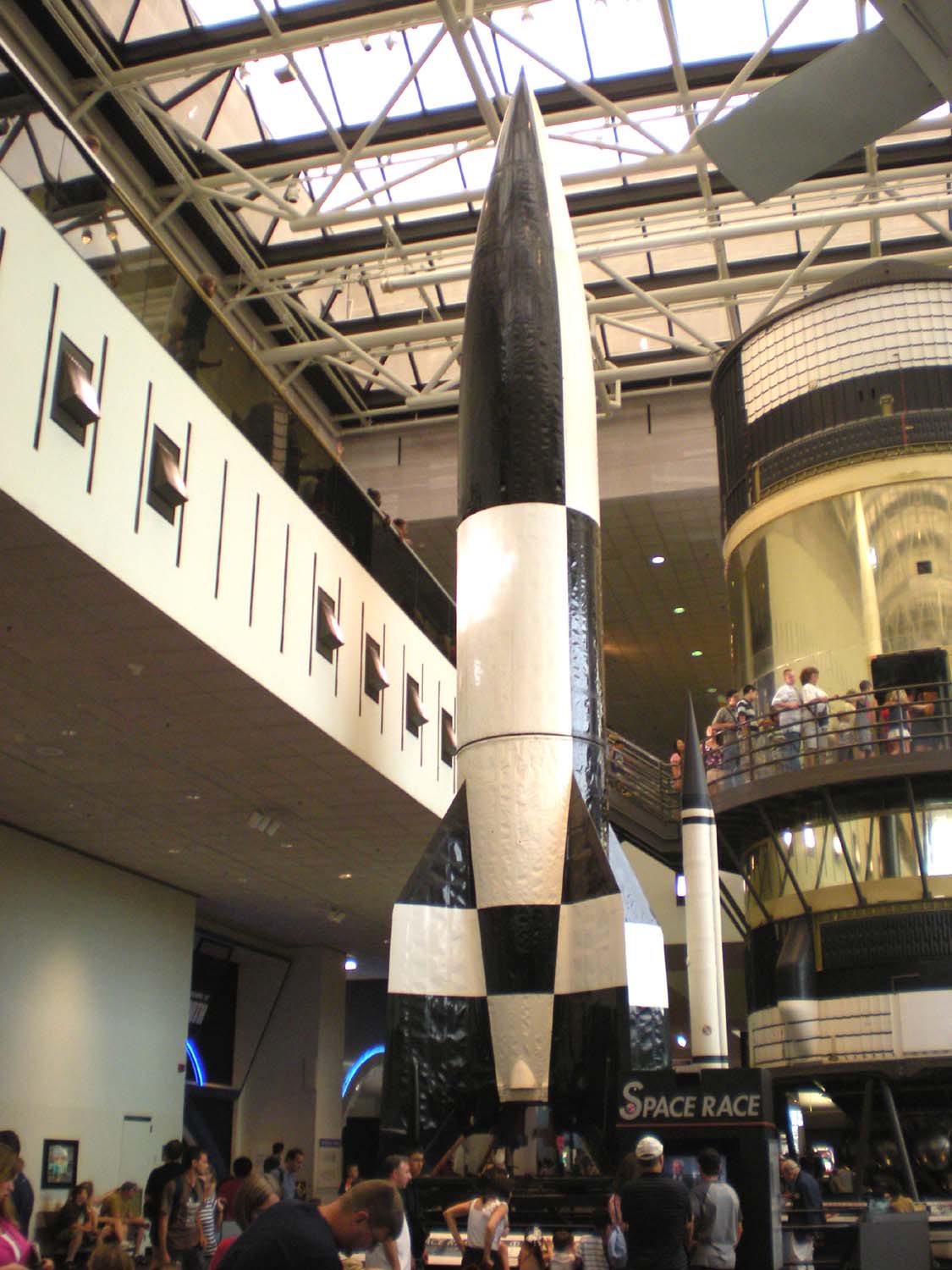| Smithsonian Air and Space Museum / The V-2 rocket was a short-range liquid-fueled ballistic missile developed by Wernher Von Braun at Peenemünde in Germany during the second Richard Erwin world war. Standing 45 feet tall, the rocket could carry 2,200 pounds of Amatol explosive in its warhead. With a range of 200 miles, the missile 8/10/2009 could reach a speed of 3,600 mph, or about 1 mile per second. Powered by ethanol alcohol and liquid oxygen, the rocket climbed to an altitude of about 50 miles in about 65 seconds, after which it simply fell upon the target. The V-2 first flew on October 3, 1942, a date which has been called the first of a new era, that of space travel. 6,048 V-2's were built and on September 8, 1944, the Germans began using the missile to attack Allied cities. By the time the missile attacks halted on March 27, 1945, about 2750 people were killed in London alone, with another 6500 injured. Unlike the V-1 which could be shot down with anti-aircraft guns, the V-2 was too high and too fast to be defended against. Perhaps the most damaging result of the V-2 project was the fact that most of the construction was done by slave labor and about 20,000 of these workers died during the building of the rocket, some 9,000 from exhaustion and collapse, about 350 were hanged, and the rest were either shot or died from disease or starvation. |
